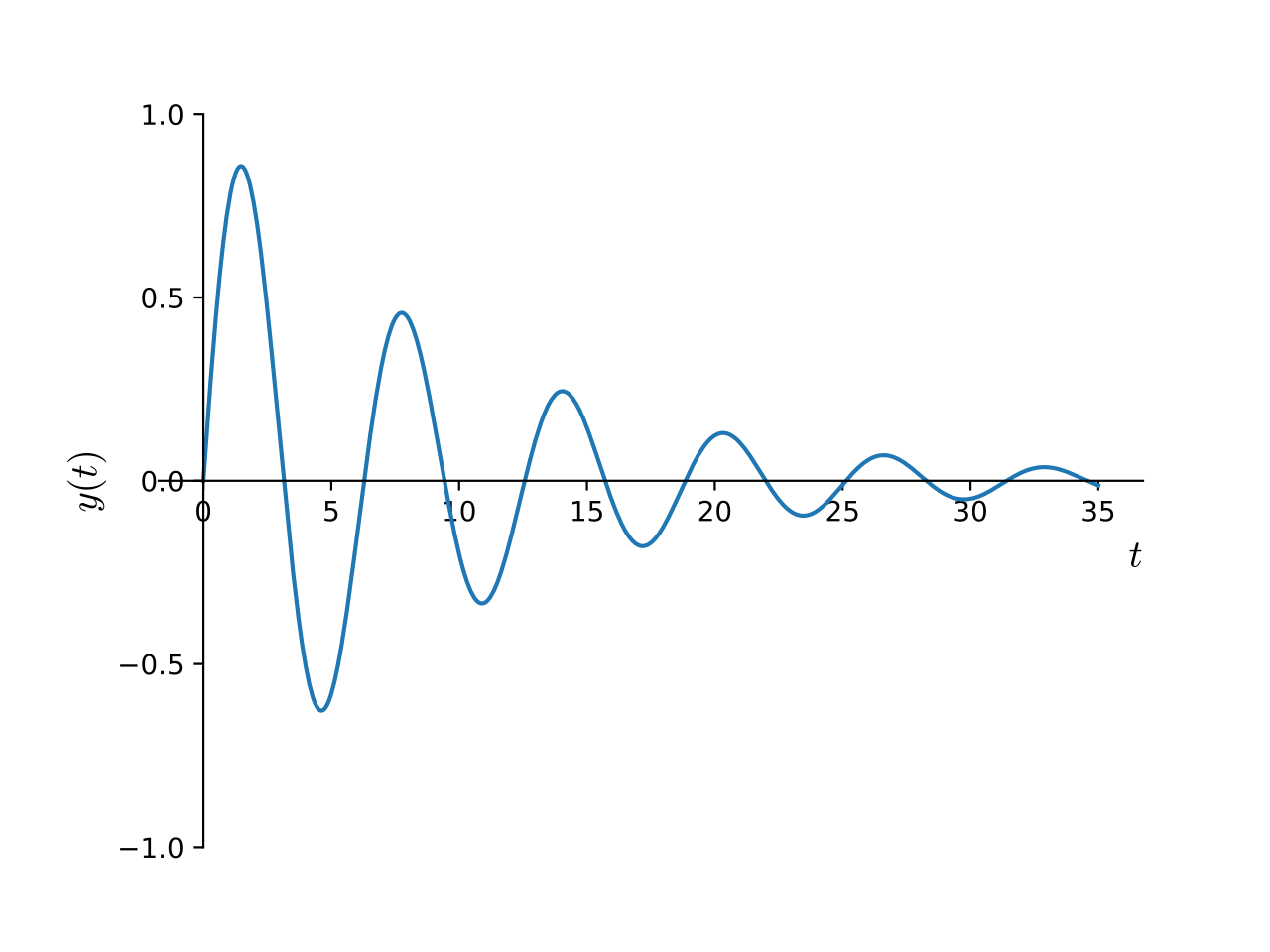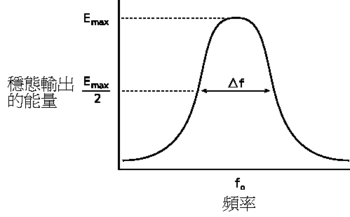Explanation
In physics and engineering, the quality factor or Q factor is a dimensionless parameter that describes how underdamped an oscillator or resonator is. It is defined as the ratio of the initial energy stored in the resonator to the energy lost in one radian of the cycle of oscillation. Q factor is alternatively defined as the ratio of a resonator’s center frequency to its bandwidth when subject to an oscillating driving force. These two definitions give numerically similar, but not identical, results.
Tip
高Q因子表示振子能量损失的速率较慢,振动可持续较长的时间; 单摆在空气中Q因子较高而在油中较低
 Fig. A damped oscillation. A low Q factor – about 5 here – means the oscillation dies out rapidly.
Fig. A damped oscillation. A low Q factor – about 5 here – means the oscillation dies out rapidly.
Q因子较高的振子在共振时,在共振频率附近的振幅较大,但会产生的共振的频率范围比较小,此频率范围可以称为频宽。
例如一台无线电接收器内的调谐电路Q因子较高,要调整接收器对准一特定频率会比较困难,但其选择性较好,在过滤频谱上邻近电台的讯号上也有较佳的效果。
系统的Q因子可能会随著应用场合及需求的不同而有大幅的差异。强调阻尼特性的系统(例如防止门突然关闭的阻尼器)其Q因子为1⁄2,而时钟、雷射或是其他需要强烈共振或是要求频率稳定性的系统其Q因子也较高。音叉的Q因子大约为1000,原子钟、加速器中的超导射频或是光学共振腔的Q因子可以到
Help
There are many alternative quantities used by physicists and engineers to describe how damped an oscillator is. Important examples include: the damping ratio, relative bandwidth, linewidth and bandwidth measured in octaves.
Definition

Fig. 一阻尼谐振子的频宽, 可以用频率和能量的图来表示。阻尼谐振子(或滤波器)的Q因子为。Q因子越大,其波峰高度会越高,而其宽度会越窄
In the context of resonators, there are two common definitions for Q, which aren’t exactly equivalent. They become approximately equivalent as Q becomes larger, meaning the resonator becomes less damped.
Bandwidth definition
为共振频率,为频宽,一般是 full width at half maximum (FWHM)
Stored energy definition
Q因子可定义为在一系统的共振频率下,当信号振幅不随时间变化时,系统储存能量和每个周期外界所提供能量的比例(此时系统储存能量也不随时间变化)
同时在像电感等储能元件的规格中,会用到和频率有关的Q因子,其定义如下
其中是计算储存能量和功率损失时的角频率